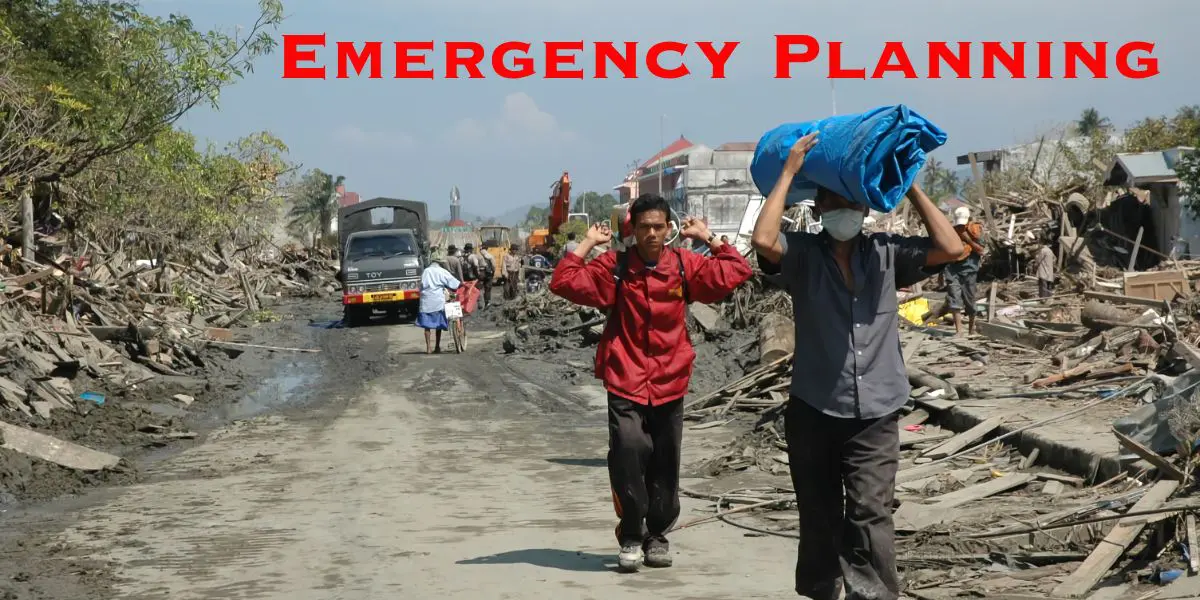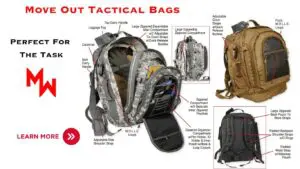Introduction
In times of crisis or disaster, having a well-thought-out emergency plan is crucial. One important aspect of emergency planning is bugging out, which refers to the act of leaving your current location and seeking a safer place. Bugging out is a proactive approach to ensure the safety and well-being of yourself and your loved ones.
A key component of bugging out is the concept of a bug out bag. A bug out bag is a portable kit that contains essential items to sustain you for at least 72 hours during an emergency situation. It is designed to provide you with the necessary supplies and tools to survive until you can reach a safe location or until help arrives.
Disaster preparedness and survival preparedness are essential for everyone, regardless of where you live. Natural disasters, such as hurricanes, earthquakes, or wildfires, can strike unexpectedly, leaving you with little time to react. By being prepared and having a comprehensive emergency plan in place, you can minimize the risks and increase your chances of survival.
Having a bug out bag ready and a well-thought-out bugging out strategy can make a significant difference in an emergency situation. It allows you to quickly grab your essentials and evacuate to a safer location, ensuring your safety and the safety of your loved ones.
Section 1: Understanding Bugging Out
When it comes to emergency planning, understanding what bugging out entails is essential. Bugging out refers to the act of leaving your current location and evacuating to a safer place. It is a proactive approach to ensure your safety and the safety of your loved ones in the face of a disaster or crisis.
There are several factors to consider when deciding whether to bug out or not. These factors include:
- The severity of the situation: Assessing the severity of the disaster or crisis is crucial in determining whether bugging out is necessary. If staying in your current location puts you at significant risk, it may be safer to evacuate.
- Availability of resources: Consider the availability of essential resources such as food, water, and medical supplies. If these resources are scarce or inaccessible in your current location, bugging out may be the best option.
- Proximity to danger zones: If your current location is in close proximity to danger zones, such as flood-prone areas or areas prone to wildfires, it is advisable to evacuate to a safer location.
- Communication and information: Stay informed about the situation through reliable sources of information. If authorities recommend or mandate evacuation, it is crucial to follow their instructions.
Having a well-thought-out bugging out strategy is of utmost importance. It involves planning and preparing for various scenarios to ensure a smooth and safe evacuation. A comprehensive bugging out strategy should include:
- Identifying potential evacuation routes: Research and map out multiple evacuation routes from your current location to safer areas. Consider alternative routes in case primary routes are blocked or inaccessible.
- Safe locations: Identify safe locations where you can seek shelter during an emergency. These locations can include designated evacuation centers, the homes of friends or family members, or even remote areas away from the disaster zone.
- Communication plan: Establish a communication plan with your family or group members to stay connected during the evacuation process. Determine a designated meeting point and establish alternative means of communication in case traditional methods are unavailable.
- Emergency supplies: Prepare a bug out bag with essential items such as food, water, first aid supplies, clothing, and important documents. Ensure that your bug out bag is easily accessible and ready to grab in case of an emergency.

By understanding what bugging out entails, considering the factors that influence the decision to bug out, and having a well-thought-out bugging out strategy, you can increase your chances of staying safe and secure during an emergency situation.
Section 2: Creating a Bug Out Bag
When it comes to emergency situations, having a bug out bag can be a lifesaver. A bug out bag is a portable kit that contains essential items to sustain you for at least 72 hours during an emergency. It is designed to provide you with the necessary supplies and tools to survive until you can reach a safe location or until help arrives.
The importance of having a bug out bag cannot be overstated. During an emergency, time is of the essence, and having a well-prepared bug out bag can save valuable minutes and ensure that you have the necessary resources at your disposal. It provides a sense of security and peace of mind, knowing that you are prepared for unforeseen circumstances.
So, what should you include in your bug out bag? Here is a list of essential items:
| Category | Items |
|---|---|
| Food and Water | Canned food, energy bars, water bottles, water purification tablets |
| Shelter and Clothing | Tent, sleeping bag, extra clothing, rain gear |
| First Aid | First aid kit, medications, personal hygiene items |
| Tools and Equipment | Multi-tool, flashlight, batteries, fire starter, duct tape |
| Communication and Navigation | Whistle, compass, map, portable radio |
| Personal Documents | Identification documents, insurance papers, emergency contacts |
It is important to customize your bug out bag based on your specific needs and circumstances. Consider factors such as climate, geographical location, and the number of people in your group when selecting items for your bag.
When selecting the right bag for your bug out bag, there are a few tips to keep in mind:
- Durability: Choose a bag that is made of sturdy and durable materials to withstand rough conditions.
- Comfort: Look for a bag with padded straps and back support to ensure comfort during long journeys.
- Size and Capacity: Consider the size and capacity of the bag to accommodate all your essential items without being too bulky or heavy.
- Organization: Opt for a bag with multiple compartments and pockets to help you stay organized and easily access your items.
Remember to periodically review and update the contents of your bug out bag to ensure that everything is in working order and up to date. Check expiration dates on food, medications, and batteries, and replace them as needed.
By creating a well-stocked bug out bag and selecting the right bag for your needs—like this compact hygiene pack which could fit into even the smallest of bags—you can be better prepared for emergencies and increase your chances of survival.
Section 3: Emergency Planning for Bugging Out
Creating a comprehensive emergency plan for bugging out is crucial to ensure a smooth and safe evacuation. By taking the time to plan and prepare, you can minimize risks and increase your chances of successfully navigating through an emergency situation.
Here are the steps to create a comprehensive emergency plan for bugging out:
- Evaluate Potential Risks: Start by assessing the potential risks and hazards in your area. Consider natural disasters, such as hurricanes, earthquakes, floods, or wildfires, as well as other potential threats specific to your location.
- Identify Evacuation Routes: Research and identify multiple evacuation routes from your current location to safer areas. Take into account different scenarios and potential road closures. Mark these routes on a map for easy reference.
- Designate Safe Locations: Identify safe locations where you can seek shelter during an emergency. These locations can include designated evacuation centers, the homes of friends or family members outside the affected area, or even remote areas away from the disaster zone.
- Prepare Emergency Supplies: As mentioned earlier, having a well-stocked bug out bag is essential. Ensure that your bag contains all the necessary items for survival, including food, water, first aid supplies, clothing, and important documents.
- Establish Communication: Establish a communication plan with your family or group members to stay connected during the evacuation process. Determine a designated meeting point and establish alternative means of communication in case traditional methods are unavailable.
- Consider Transportation: Transportation plays a crucial role in emergency evacuations. Evaluate your transportation options and consider factors such as fuel availability, vehicle capacity, and alternative modes of transportation, such as bicycles or walking.
During the planning process, it is important to involve all members of your household or group. Assign specific responsibilities to each person and ensure that everyone understands the plan and knows what to do in case of an emergency.
When identifying potential evacuation routes and safe locations, it is helpful to have a map that clearly marks these points. This allows for easy visualization and reference during high-stress situations. Take a look at the image below for an example:
Remember, emergency planning is an ongoing process. Regularly review and update your emergency plan to account for any changes in your environment or personal circumstances. Stay informed about potential threats and be prepared to adapt your plan accordingly.
By following these steps and creating a comprehensive emergency plan for bugging out, you can be better prepared to face emergencies and protect yourself and your loved ones.
Section 4: Ensuring Survival Preparedness
When it comes to bugging out and emergency preparedness, acquiring survival skills and knowledge is of utmost importance. While having the right supplies and equipment is essential, knowing how to use them effectively can make all the difference in a crisis situation.
Here are some reasons why acquiring survival skills and knowledge is crucial:
- Self-Reliance: By learning survival skills, you become more self-reliant and less dependent on external resources. You gain the ability to adapt and overcome challenges, increasing your chances of survival.
- Problem-Solving: Survival skills teach you how to think critically and make sound decisions under pressure. You learn to assess situations, identify potential risks, and find practical solutions.
- Resource Management: Knowing how to effectively manage limited resources, such as food, water, and shelter, is vital in survival situations. Survival skills help you make the most of what you have and prioritize your needs.
- Stress Management: Emergency situations can be highly stressful. Acquiring survival skills helps you develop resilience and the ability to stay calm and focused in challenging circumstances.
Training and practicing survival techniques are essential to hone your skills and build confidence. Consider the following tips to enhance your survival preparedness:
- Take Survival Courses: Look for local survival courses or workshops that teach essential skills such as fire starting, shelter building, navigation, and first aid. These courses provide hands-on experience and expert guidance.
- Practice Basic Survival Skills: Regularly practice basic survival skills in a controlled environment. Set up a camp in your backyard and practice building shelters, starting fires, purifying water, and foraging for food.
- Learn Wilderness First Aid: Knowledge of basic first aid techniques specific to wilderness environments can be life-saving. Consider taking a wilderness first aid course to learn how to handle injuries and medical emergencies in remote locations.
- Join Survival Groups: Building a network of like-minded individuals who share your interest in survival preparedness can provide support and valuable knowledge exchange. Look for local survival groups or online communities to connect with.
Survival training sessions, like the one depicted in the image below, offer hands-on experience and the opportunity to learn from experienced instructors:

Remember, survival preparedness is an ongoing process. Continuously seek opportunities to expand your knowledge and skills. Regularly review and update your training to stay current with the latest techniques and best practices.
By acquiring survival skills, training and practicing survival techniques, and building a network of like-minded individuals, you can enhance your survival preparedness and increase your chances of successfully navigating through emergency situations.
Section 5: Maintaining and Updating Your Bugging Out Strategy
Creating a bugging out strategy is not a one-time task. It requires regular review, updates, and practice to ensure its effectiveness. By maintaining and updating your strategy, you can adapt to changing circumstances and increase your preparedness for emergencies.
Here are some important steps to consider when maintaining and updating your bugging out strategy:
- Regular Review: Set aside time at least once a year to review your emergency plan. Assess its relevance and make any necessary adjustments based on changes in your environment, personal circumstances, or new information.
- Update Contact Information: Ensure that your emergency contact list is up to date. Update phone numbers, addresses, and any other relevant information. This will help you stay connected with your loved ones and emergency services.
- Conduct Drills and Simulations: Practice your bugging out strategy through drills and simulations. This will help you identify any weaknesses or gaps in your plan and allow you to make improvements accordingly.
- Test Equipment and Supplies: Regularly check and test your bug out bag and emergency supplies. Ensure that everything is in working order, batteries are charged, and food and water supplies are not expired.
- Stay Informed: Stay updated on potential threats and changes in your environment. Follow reliable sources of information, such as local authorities or reputable news outlets, to stay informed about any developments that may impact your emergency plan.
Conducting drills and simulations is an effective way to test the effectiveness of your bugging out strategy. By simulating emergency scenarios, you can identify areas that need improvement and make necessary adjustments. It also helps you and your family become familiar with the actions to take during an actual emergency.
Take a look at the image below, which shows a family discussing their emergency plan:

Remember, emergency situations can be unpredictable, and being prepared is key to your safety and well-being. By regularly maintaining and updating your bugging out strategy, you can ensure that you are ready to respond effectively in times of crisis.
Frequently Asked Questions (FAQ)
- What is the difference between bugging out and sheltering in place?Bugging out and sheltering in place are two different approaches to emergency situations. Bugging out involves leaving your current location and evacuating to a safer place. It is typically done when staying in your current location puts you at significant risk, such as during a natural disaster or civil unrest. On the other hand, sheltering in place means staying in your current location and taking measures to protect yourself from the immediate danger. This approach is often recommended when it is safer to stay indoors, such as during a severe storm or a chemical spill.
- How often should I update my bug out bag?It is important to regularly update your bug out bag to ensure that the contents are still relevant and in good condition. As a general guideline, review and update your bug out bag at least once a year. Check for expired food, medications, and batteries, and replace them as needed. Additionally, consider any changes in your personal circumstances, such as the addition of a new family member or changes in medical needs, and adjust your bug out bag accordingly.
- Can I use a regular backpack as a bug out bag?While a regular backpack can be used as a temporary solution, it is not ideal for a bug out bag in the long term. Regular backpacks are not designed to withstand the rigors of emergency situations and may not have the necessary features to organize and carry essential survival items. It is recommended to invest in a dedicated bug out bag that is specifically designed for emergency preparedness. These bags often have multiple compartments, reinforced straps, and other features that make them more suitable for survival situations.
- What are some essential survival skills to learn?There are several essential survival skills that are worth learning to increase your preparedness. Some of these skills include:
- Fire starting and basic fire building techniques
- Shelter building and improvisation
- Water purification and finding water sources
- Basic first aid and medical skills
- Navigation using a compass and map reading
- Foraging for edible plants and hunting or fishing for food
By acquiring these skills, you can become more self-reliant and better equipped to handle emergency situations.
- How can I involve my family in the emergency planning process?Involving your family in the emergency planning process is crucial for their safety and well-being. Here are some ways to get your family involved:
- Hold family meetings to discuss emergency plans and procedures.
- Assign specific roles and responsibilities to each family member.
- Practice drills and simulations together to familiarize everyone with the actions to take during an emergency.
- Encourage open communication and address any concerns or questions your family members may have.
- Teach your family members basic survival skills and first aid techniques.
By involving your family in the emergency planning process, you can ensure that everyone is prepared and knows what to do in case of an emergency.

































